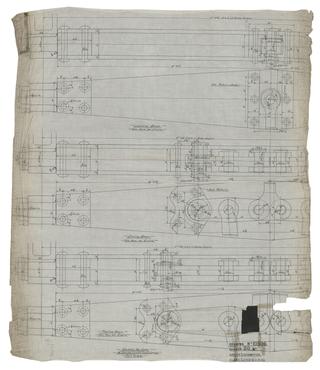
Horwich Works
In 1884 the Lancashire and Yorkshire Railway (L&Y) acquired the land for a new locomotive works at Horwich, in Bolton. Although repair work began in 1887 and locomotive building the following year, the works, with its foundries, forge, smithy and comprehensive range of shops (signal/telegraph/points, etc.), only became fully operational in 1892. Horwich Works was responsible for the L&Y’s locomotive building, repair, mechanical, electrical and hydraulic engineering. In its first ten years it produced 677 new locomotives.
Between 1902 and 1918, the L&Y experimented with electrification, with Horwich Works Drawing Office designed motor/trailer cars and bogies being built at Horwich Works. Its work on electrification continued during World War I. However, as Horwich Works became more involved in the war effort (manufacturing ammunition, shells, and fuses, and supplying chassis for motor lorries), the construction of passenger engines ceased and some goods engines were constructed using spares.
In 1922 the L&Y amalgamated with the London & North Western Railway which became part of the London, Midland and Scottish Railway (LMS) under Grouping in 1923. The LMS inherited several large works and sought to rationalise its workshop operations. By 1927 the steel foundry, the telegraph shop, the signal shop, and the points and crossing shop at Horwich Works had all closed.
Locomotive building continued at Horwich Works until 1931 when it was suspended as a result of the economic depression. It continued to carry out repairs. During World War II Horwich Works produced ammunition, vehicle and plane parts. Locomotive production resumed in 1944. Horwich Works built its last steam locomotive in 1957 and its last diesel locomotive in 1962, concentrating on repairs and other railway engineering work. It was transferred to British Rail Engineering Limited in 1970. Horwich Works closed in 1983.